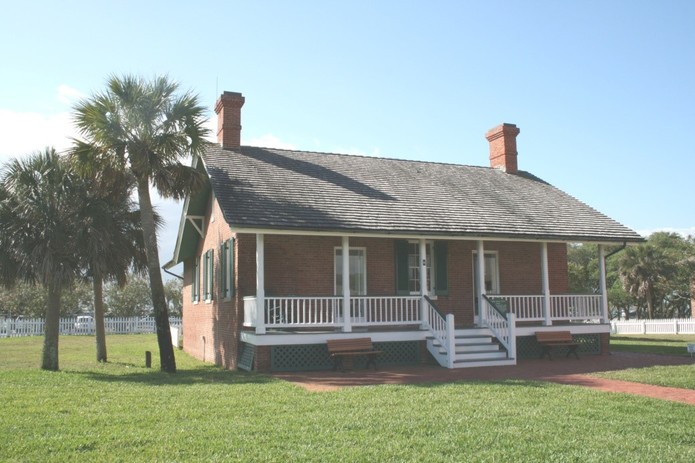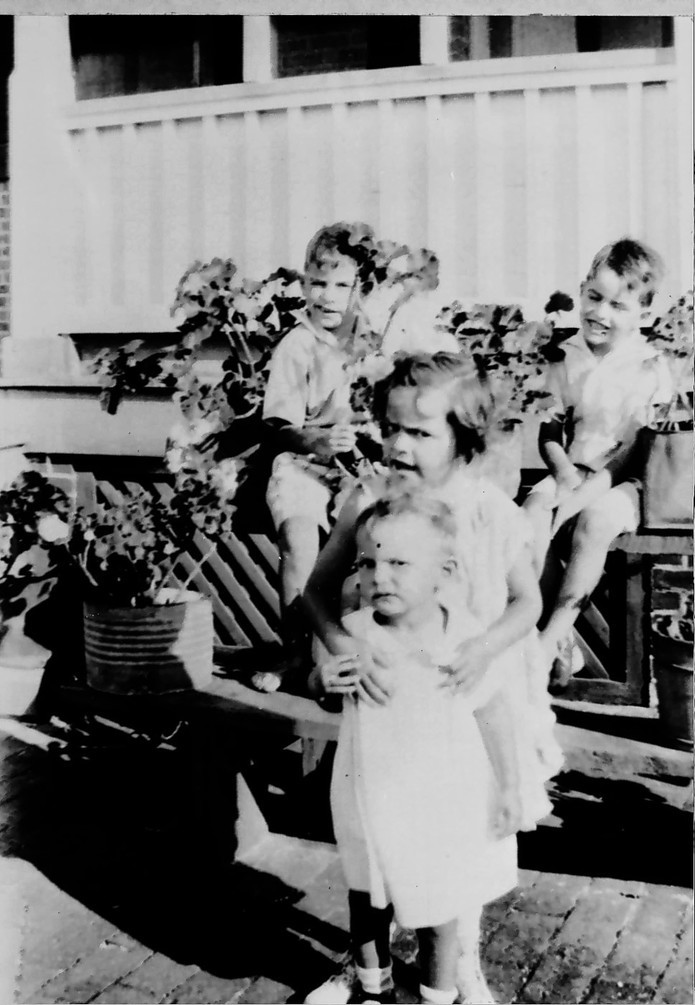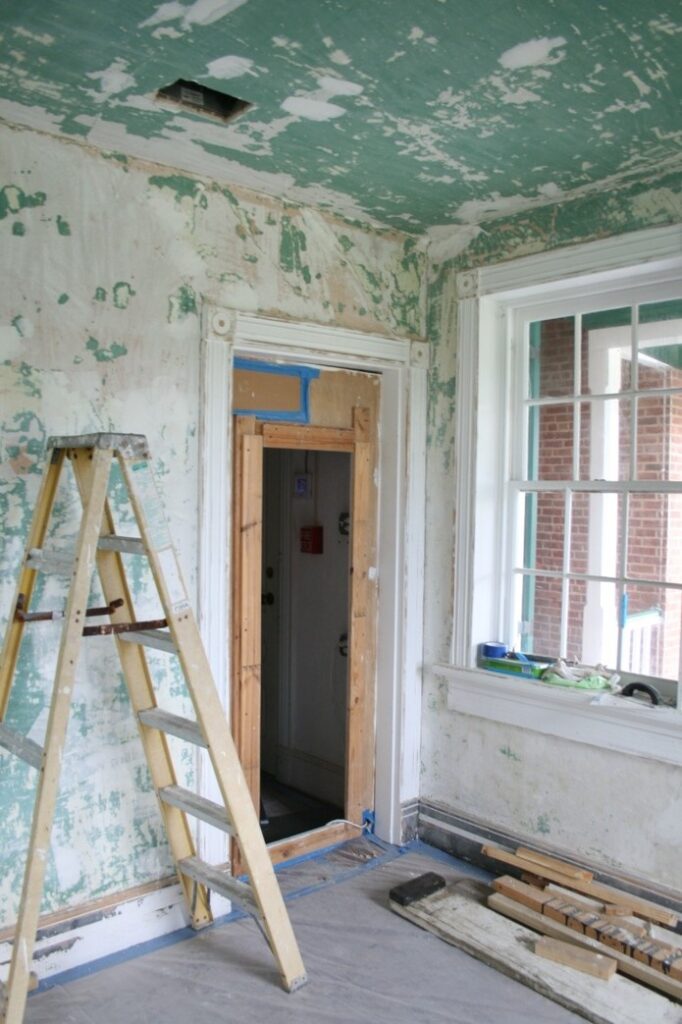
This building is named for Gladys Meyer Davis, daughter of Edward Lockwood Meyer, the last civilian principal keeper at the Ponce Inlet Lighthouse. Gladys was actually born in this building in 1928, while her father was serving as first assistant keeper. Edward Meyer left Ponce Inlet in 1930 but returned as principal keeper in August of 1937. In 1939, when the Lighthouse Service became part of the Coast Guard, Meyer enlisted and served as officer in charge at the lighthouse until 1943. Gladys Meyer Davis has remained a life-long resident of the Town of Ponce Inlet.

Edward L. Meyer

Gladys Meyer

Gladys Meyer Davis with her daughter Julie to the left, and her husband Earl and daughter Ellie to the right.
The dwelling for the first assistant and family is the twin of the second assistant dwelling, the only difference being that in the second assistant home, the wall between the kitchen and dining room was removed during the late 1960s when that building was used as the town hall for the Town of Ponce Inlet. The pantry door in the second assistant dwelling has also been removed and exhibits with viewing windows were installed. The pantry door remains in place in the first assistant’s kitchen. It s interesting to consider that most keeper families were large, and these two-bedroom houses were typically occupied by as many as seven people. Privacy was not considered important then!

Four of the Meyer family’s five children.
The first assistant’s home is not open to visitors. Instead, viewing windows allow visitors to see how a typical keeper dwelling might have been decorated in the early 1900s. At most lighthouses, keepers were expected to bring their own furniture and other household goods. At Mosquito Inlet, the government provided all the houses with cast iron sinks for the kitchens, stoves for cooking and heating, kerosene lanterns and table lamps, and storage units called “kitchen dressers,” two of which can be seen in the first assistant’s kitchen. A third kitchen dresser disappeared and has remained missing over the years. On the living room wall near the doorway to the kitchen, you can see an original sconce that was used to hold an oil lamp. Each house probably had several of these, but they were eventually removed by the time the buildings were fully electrified in 1946. The kitchen table and chairs on view belonged to the Meyer family. The table is set with the museum’s fine collection of original Lighthouse Service china as well as with an early Light-House Establishment table lamp.

First assistant keeper’s kitchen table set with Lighthouse Service china and Light-House Establishment table lamp.

Original sconce for an oil lamp from the first assistant keeper dwelling.
The interiors of all the dwellings have undergone restoration work. It’s interesting to note that the original interior paint color for both walls and ceilings was dark green! It was decided to use a white mineral coating on the walls after restoration so the exhibits would be more visible.

Large bedroom of first assistant keeper during restoration work.
This particular dwelling had some interesting uses over the years. Prior to the entry of the United States into World War II, a radio room was established at the lighthouse to provide an invisible navigational aid for passing vessels. The radio equipment was first installed in the large bedroom of this building in 1939. The Lighthouse Service had recently been absorbed into the Coast Guard, and the resident Coast Guard officer in charge then lived in the principal keeper dwelling and his relief keeper lived in the second assistant dwelling. Generators that powered the radio room were kept nearby in the woodshed portion of the first assistant’s outbuilding.
By 1942, the families had been relocated off the station and both the principal keeper dwelling and the first assistant building were being used as barracks for Coast Guardsmen who had been sent there for training and to maintain both the radio beacon and the lighthouse beacon.



